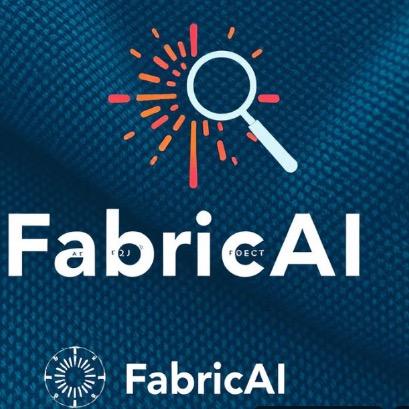AI-Powered Fabric Defect Detection
AI-Powered Fabric Defect Detection: Revolutionizing textile quality control with deep learning and computer vision for accurate, automated defect analysis.
Created on 2nd October 2024
•
AI-Powered Fabric Defect Detection
AI-Powered Fabric Defect Detection: Revolutionizing textile quality control with deep learning and computer vision for accurate, automated defect analysis.
Describe your project
AI-Powered Fabric Defect Detection: Automating Textile Quality Control
Our AI-powered solution automates textile quality control using deep learning and computer vision, offering quick and accurate defect detection in fabrics.
In-Scope Features:
Image Upload: Users can upload fabric images for automated analysis.
Defect Detection: A pre-trained MobileNetV2 model detects fabric defects.
Visualization: Grad-CAM heatmaps visually highlight potential defect areas.
Binary Classification: The system classifies images as either "Defect Detected" or "No Defect Detected."
Confidence Score: The model provides a confidence score for the prediction.
Explanation: Results are explained based on the heatmap outputs.
Contextual Analysis: The system suggests potential causes of defects.
Recommendations: Provides generic suggestions for addressing the detected defects.
User Interface: A web interface built using Streamlit makes it easy to use.
Out of Scope:
Multi-class Defect Classification: Does not identify specific defect types.
Real-time Processing: Not designed for production line analysis.
Manufacturing System Integration: This is a standalone solution with no system integration.
Custom Model Training: Uses a pre-trained model without textile-specific training data.
Historical Data Tracking: No storage or analysis of past defect data.
Automated Reporting: No comprehensive report generation.
Mobile Application: Limited to a web-based interface.
Future Opportunities:
Multi-class Classification: Identify specific fabric defect types.
Custom Dataset: Train the model on textile-specific data to improve accuracy.
Real-time Analysis: Integrate camera feeds for production line analysis.
Integration: Develop APIs for manufacturing and ERP system integration.
Advanced Reporting: Provide detailed analytics and reports for quality control.
Continuous Learning: Implement a feedback loop to continuously improve the model.
Mobile App: Develop a mobile application for on-the-go inspections
Challenges we ran into
During the development of our AI-Powered Fabric Defect Detection system, we faced several hurdles:
- Model Adaptation:
Adapting the pre-trained MobileNetV2 for fabric defect detection required modifying its architecture. We experimented with different layer configurations and activation functions to optimize for our binary classification task. - Grad-CAM Implementation:
Implementing Grad-CAM for visualization was complex. We ensured correct gradient computation and heatmap generation aligned with our model architecture, studying research papers and open-source implementations. - Image Preprocessing:
Creating a consistent preprocessing pipeline for varied fabric images (texture, color, lighting) was crucial. We experimented with various techniques to ensure reliable model performance. - Streamlit Integration:
Integrating Streamlit with our TensorFlow model and OpenCV pipeline required careful management of dependencies and data flow. We ensured correct processing and display of uploaded images in the interface. - Performance Optimization:
Real-time model inference and Grad-CAM computation posed challenges, especially for larger images. We implemented efficient resizing and data handling to improve responsiveness. - False Positives/Negatives:
Balancing defect sensitivity while avoiding false positives was challenging. Careful threshold tuning highlighted the need for a future multi-class approach. - Contextual Analysis Limitations:
Providing meaningful analysis based solely on image data proved difficult. Our current generic analysis emphasizes the need for future integration with broader manufacturing data.
To overcome these challenges, we: - Experimented extensively with model architectures and hyperparameters.
- Studied and adapted Grad-CAM implementations from research.
- Developed a robust image preprocessing pipeline.
- Iteratively refined our Streamlit app for optimal performance.
- Recognized current limitations to inform future enhancements.
Tracks Applied (1)
